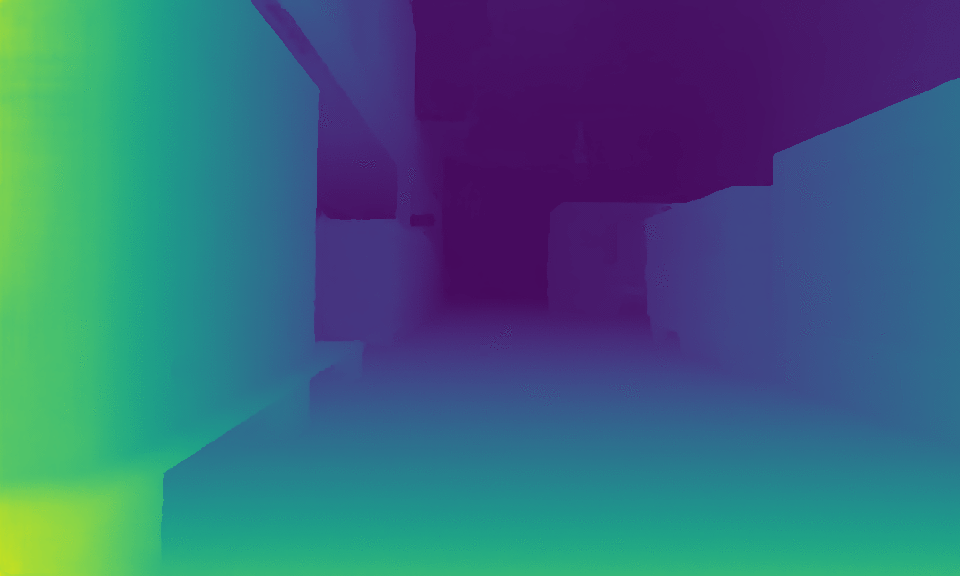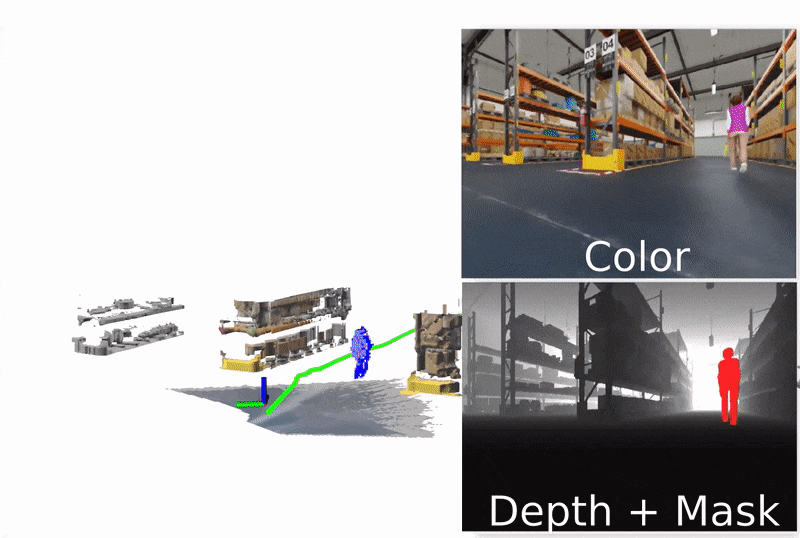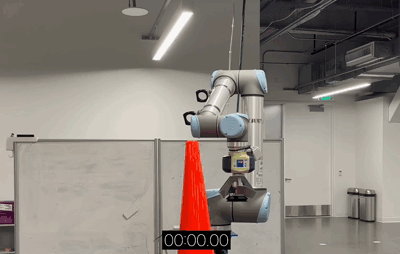
Why is it Essential? | The Challenges | Isaac ROS for Robotic Vision | Isaac ROS Vision Examples
Computer Vision has emerged as a transformative technology in robotics, enabling machines to interpret and interact with the world in sophisticated ways. From recognizing objects to navigating complex environments, computer vision is integral to many robotic functions. This article explores why AI-powered computer vision is crucial for robotics, delves into the challenges of integrating SOTA (state-of-the-art) computer vision pipelines, and highlights how the NVIDIA Isaac ROS framework enhances the robot development process by providing powerful accelerated libraries and AI models.
Why AI-Powered Computer Vision is Essential for Robotics
Computer vision serves as the “eyes” of robotic systems, allowing them to perform intricate tasks that require interpretation of visual data. Through the combination of computer vision and AI, machines can understand, analyze, and respond to visual information from the world around them. Here are some of computer vision’s core functions:
- Perception and Object Recognition:
Computer vision enables robots to accurately identify and classify objects, a capability essential in manufacturing, agriculture, and logistics applications. - Navigation and Mapping:
Robots, such as last-mile delivery agents, use computer vision to navigate spaces, avoid obstacles, and follow routes, which is critical for mobile robots operating in dynamic environments. - Decision-Making:
By analyzing visual data, robots can successfully interpret environmental cues and make real-time decisions, essential in applications like autonomous driving or robotic surgery.
Real-World Examples of Robotic Vision
- Last-Mile Delivery Robots:
Computer vision enables these robots to identify obstacles, navigate sidewalks, and recognize delivery destinations, ensuring efficient and safe delivery of goods. Visual simultaneous localization and mapping (VSLAM) uses computer vision for real-time mapping, allowing these autonomous systems to dynamically navigate and comprehend their surroundings. - Industrial Robots:
In manufacturing, computer vision enables robotic arms to identify and handle specific parts, improving productivity and precision. In the mining industry, computer vision empowers autonomous mobile robots (AMRs) to navigate complex, unknown environments with precision. - Medical Robotics:
In healthcare, vision-powered robots assist in surgeries, using visual data for precise movements and diagnostics, and reduce the risk of human error during complex procedures.
Challenges of Integrating Computer Vision for Robotics
Integrating computer vision in robotics brings specific challenges that developers must overcome to build efficient and reliable systems:
Low-Latency Requirements and Hardware Limitations: AI-enabled SOTA computer vision duties are computation-intensive, requiring substantial processing power. Many robotic platforms struggle with limited hardware, which can slow down or limit the functionality of computer vision systems, resulting in environmental safety risks.
Complex Development: Building optimized computer vision applications requires expertise and often involves complex algorithms. Developers need tools that streamline this process while maintaining performance.
Connect Tech’s Edge Devices, optimized for high-speed processing, help address these limitations by enhancing the efficiency of vision tasks, enabling smoother real-time performance in computer vision-enabled robots and empowering developers to implement sophisticated algorithms more effectively.
How Isaac ROS Supports Computer Vision for Robotics
The NVIDIA Isaac ROS software stack offers high-performance software components to simplify the development of AI-enabled computer vision applications in robotics.
Built on the open-source ROS 2 software platform, Isaac ROS leverages NVIDIA GPUs and accelerated libraries for the processing power required for complex vision efforts. Designed specifically for robotics, it offers developers a flexible toolkit, including pre-trained AI models and ready-to-run reference workflows, such as Isaac Perceptor for AMRs and Isaac Manipulator for robot arms, to accelerate vision functions and support smarter, faster, and simplified robot development.
Key Benefits
Accelerated Processing: Isaac ROS leverages NVIDIA GPU acceleration, making it possible to process real-time visual data, even on hardware-constrained devices.
Pre-Trained Models: Isaac ROS includes a variety of pre-trained, plug-and-play models for object detection, semantic segmentation, depth perception, and navigation, helping developers quickly integrate advanced vision workflows.
Flexible and Customizable: Adaptable to many computer vision applications — from navigation to generative AI – enabled scene understanding—Isaac ROS is suited for a wide range of robotics projects.
Isaac ROS Robotic Vision Application Examples
Isaac ROS DNN Stereo Depth

The Isaac ROS DNN Stereo Depth software package is targeted at two main robotics application areas: AMRs and robot arms. Leveraging vision for robotics, it goes beyond traditional stereo disparity calculation by using both image pairs and LiDAR data to provide a semi-supervised approach that can learn to predict disparity.
This is especially useful for cases where epipolar geometry feature matching fails in environments unseen in the training datasets and with occluded objects.
Isaac ROS Nvblox (3D Scene Reconstruction)

Isaac ROS Nvblox provides ROS 2 packages for real-time 3D reconstruction and costmap generation, essential for navigation and obstacle avoidance. Nvblox takes a depth image, a color image, and a pose as input to compute a 3D scene reconstruction using the GPU. A generated costmap can then be transferred into a navigation software stack, such as Nav2, as input for navigation.
This package enables robots to operate in environments with people and dynamic objects by utilizing packages designed for sophisticated robotic vision.
Isaac ROS Visual SLAM

cuVSLAM is a GPU-accelerated library for stereo-visual-inertial SLAM and odometry. It utilizes robotic vision through 2D features on the input images, visual landmarks, and a graph that tracks the poses of the camera from where the landmarks are viewed. It can be used to create and save a map of the environment for advanced navigation.
Along with visual data, cuVSLAM also features the use of an inertial measurement unit (IMU) sensor. It automatically switches to IMU when visual odometry is unable to estimate a pose (dark lighting or long solid surfaces).
Isaac ROS cuMotion

Isaac ROS cuMotion provides CUDA-accelerated manipulation capabilities for robots in ROS 2. Like the Nav2 support in Nvblox, cuMotion also has out of the box integration with the vastly adapted open-source MoveIt 2 stack.
With robotic vision, it automatically enables segmentation of robots from depth streams to accurately identify and filter out parts of the robot, allowing reconstruction of obstacles in the environment without spurious contributions from the robot itself. cuMotion offers improved cycle times, improved planning times with CUDA-acceleration, obstacle avoidance using depth cameras, and flexibility to integrate with existing ROS 2 packages.
AI-powered computer vision is a cornerstone of modern robotics, enabling machines to interact intelligently with their surroundings. However, the demands of modern computer vision tasks make development challenging, especially on platforms with limited hardware.
Connect Tech’s range of ROS-optimized products, powered by NVIDIA Isaac ROS, is designed to accelerate AMR and robotic arm projects. With seamless plug-and-play integration, these solutions provide the processing power and flexibility needed to run complex ROS applications. Built for reliability and performance, they empower robots to navigate, interact, and adapt in dynamic environments with ease.
